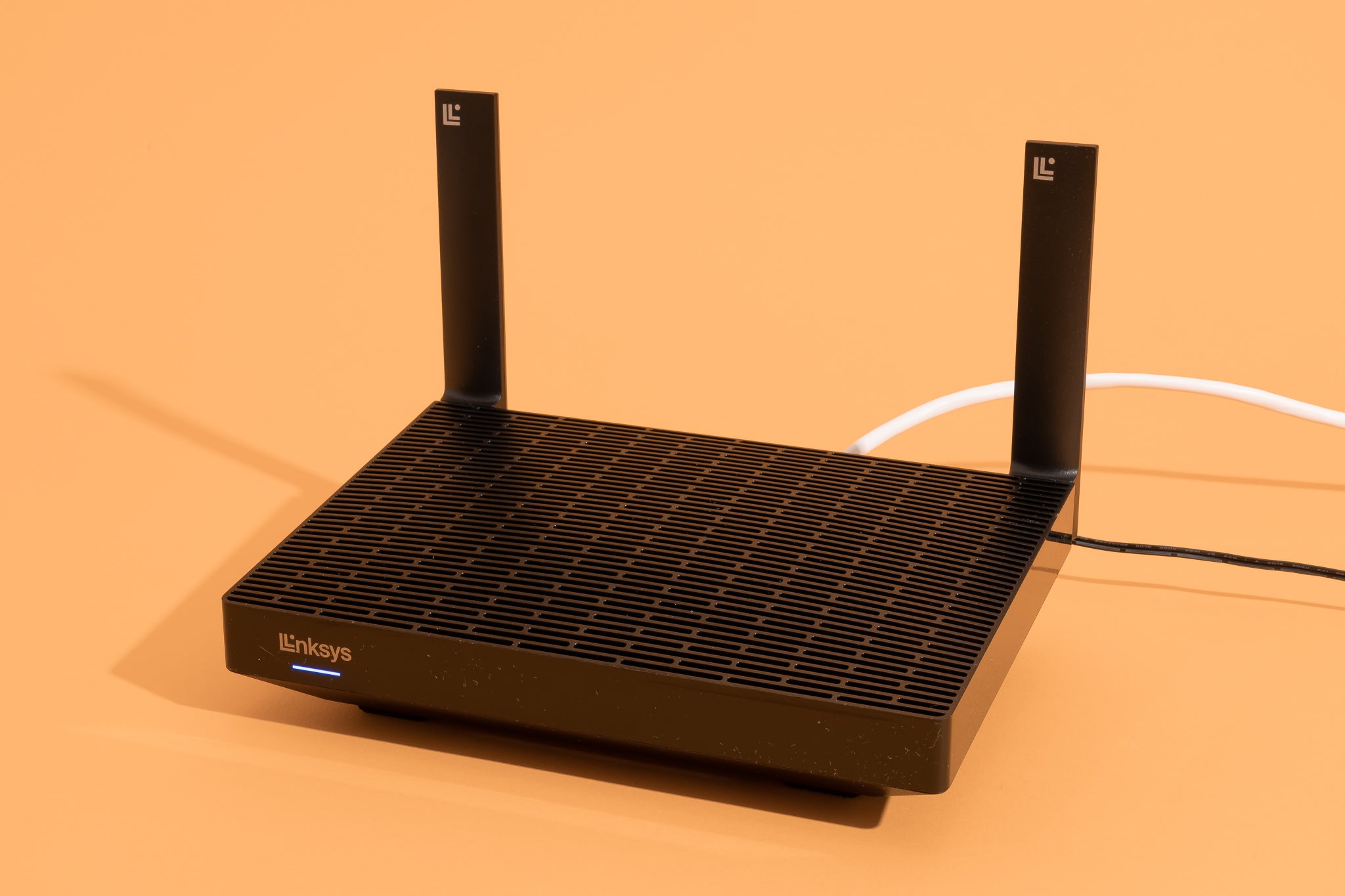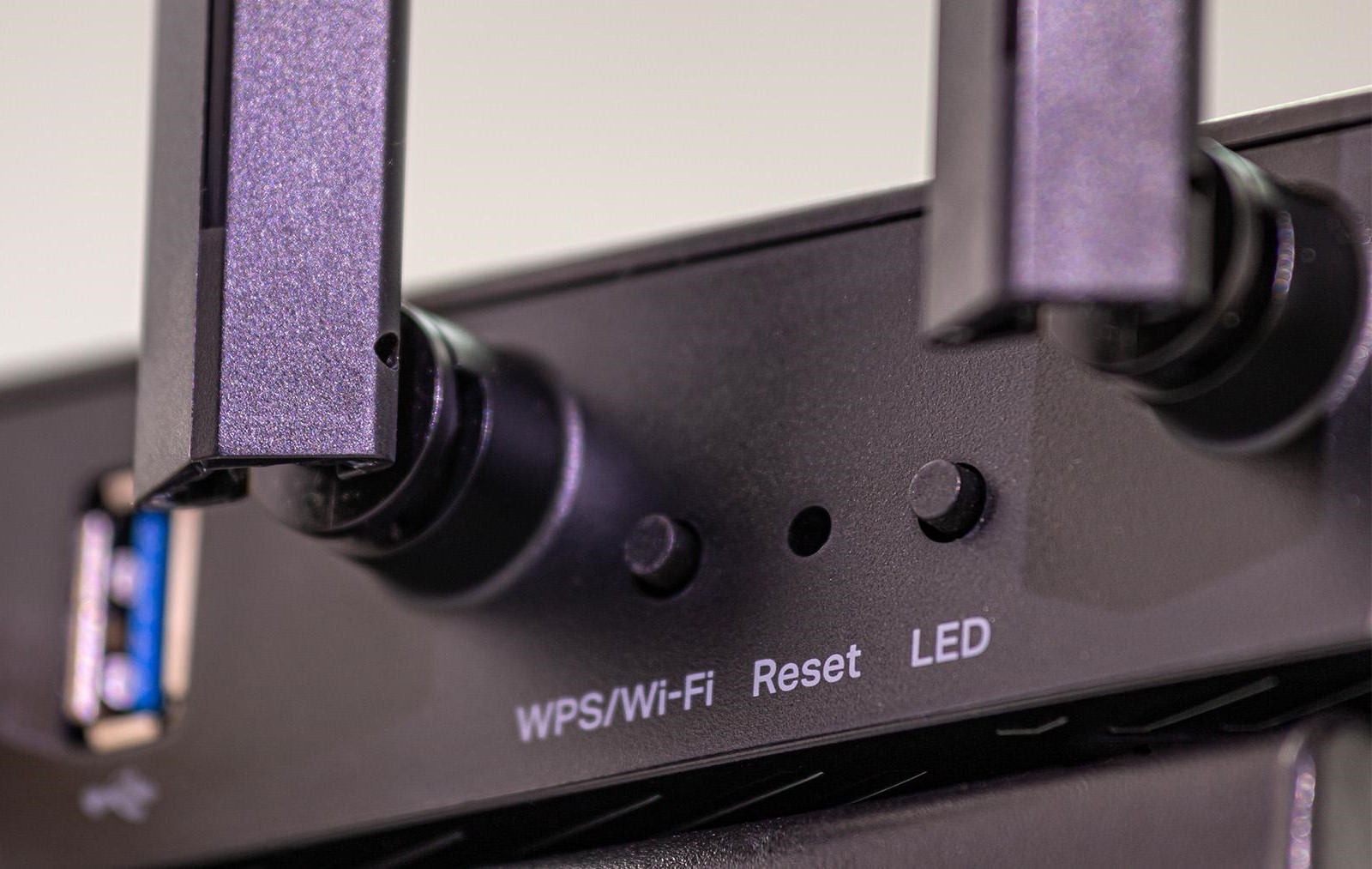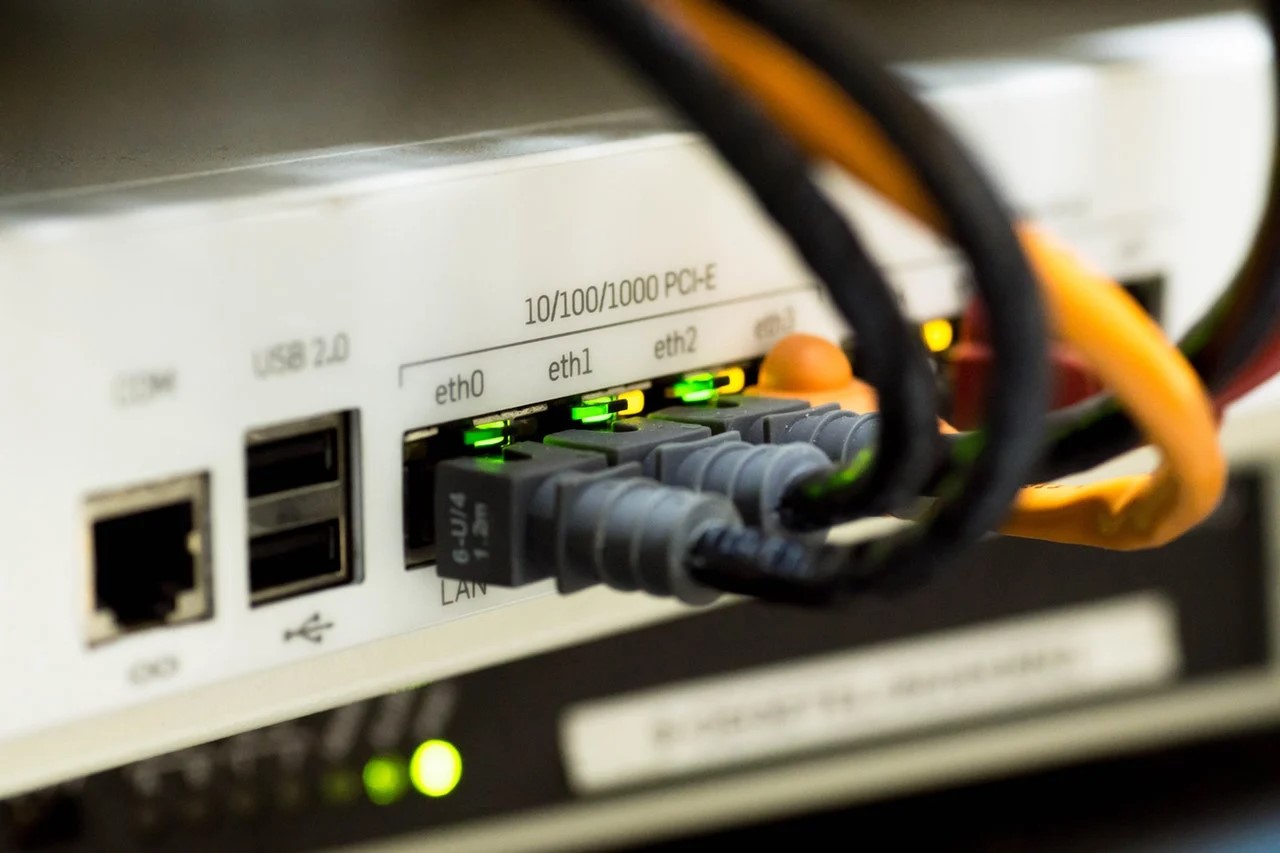Home>Technology>Smart Home Devices>How To Access My Wi-Fi Router


Smart Home Devices
How To Access My Wi-Fi Router
Modified: January 4, 2024
Learn how to access your Wi-Fi router to manage your smart home devices with ease. Get step-by-step instructions for setting up and optimizing your network.
(Many of the links in this article redirect to a specific reviewed product. Your purchase of these products through affiliate links helps to generate commission for Storables.com, at no extra cost. Learn more)
Introduction
Welcome to the world of smart home devices, where convenience and connectivity converge to elevate your living space. At the heart of this interconnected ecosystem lies your Wi-Fi router, a crucial component that facilitates seamless communication between your devices and the internet. Understanding how to access and manage your Wi-Fi router is essential for optimizing your home network and ensuring a smooth digital experience.
In this comprehensive guide, we will delve into the fundamentals of Wi-Fi routers, explore the process of connecting to your router, and learn how to access its settings. Additionally, we will address common troubleshooting issues to empower you with the knowledge needed to overcome connectivity challenges.
By the end of this journey, you will possess the skills and insights necessary to navigate the realm of Wi-Fi routers with confidence, enabling you to harness the full potential of your smart home devices. Let's embark on this enlightening exploration together, as we unravel the intricacies of accessing and managing your Wi-Fi router.
Key Takeaways:
- Your Wi-Fi router is the central hub of your smart home, connecting devices to the internet. Understanding how to connect to and customize its settings is crucial for optimizing your home network and ensuring seamless connectivity.
- Troubleshooting common Wi-Fi router issues, such as slow network speeds and intermittent connectivity, empowers you to maintain a reliable home network for your smart devices. Familiarize yourself with these techniques to ensure an optimal smart home experience.
Understanding Wi-Fi Router Basics
Before delving into the intricacies of accessing and managing your Wi-Fi router, it’s crucial to grasp the fundamental principles that underpin its functionality. A Wi-Fi router serves as the central hub of your home network, facilitating wireless communication between your devices and the internet. It functions as a gateway, directing data packets to and from various connected devices, enabling seamless connectivity within your home.
At its core, a Wi-Fi router operates on the principles of wireless communication protocols, such as the IEEE 802.11 standard, which governs the transmission of data over Wi-Fi networks. This standard encompasses various iterations, including 802.11n, 802.11ac, and the latest 802.11ax (Wi-Fi 6), each offering incremental improvements in speed, range, and overall performance.
Moreover, Wi-Fi routers typically operate on dual or tri-band frequencies, namely 2.4 GHz and 5 GHz, allowing for greater flexibility in accommodating diverse devices with varying connectivity needs. The 2.4 GHz band offers better coverage and penetration through walls, while the 5 GHz band delivers faster data transfer rates, making it ideal for bandwidth-intensive activities such as streaming high-definition content and online gaming.
Understanding the basics of Wi-Fi router hardware is equally important. Routers are equipped with multiple antennas, often utilizing advanced technologies like beamforming to optimize signal strength and coverage. Additionally, newer router models may feature advanced security protocols, such as WPA3 encryption, to safeguard your network from unauthorized access and cyber threats.
As the cornerstone of your smart home ecosystem, your Wi-Fi router plays a pivotal role in enabling seamless connectivity for an array of devices, including smart speakers, thermostats, security cameras, and more. By mastering the fundamental principles of Wi-Fi routers, you are better equipped to leverage their capabilities and optimize your home network for a truly connected living experience.
Connecting to Your Wi-Fi Router
Connecting to your Wi-Fi router is the initial step towards harnessing its capabilities and integrating your smart home devices into a cohesive network. Whether you are setting up a new router or joining an existing network, the process involves a few key steps that are essential for establishing a stable and secure connection.
The first step is to physically connect your Wi-Fi router to a power source and, if applicable, to your internet service provider’s modem using an Ethernet cable. Once powered on, the router initializes and begins broadcasting a Wi-Fi signal, enabling nearby devices to detect and connect to the network.
On your device, whether it’s a smartphone, tablet, laptop, or smart home gadget, navigate to the Wi-Fi settings menu to view the available networks. Locate your router’s network name (SSID) from the list of available networks and select it. If your router is dual-band, you may see multiple network names corresponding to the 2.4 GHz and 5 GHz bands. Choose the appropriate network based on your device’s connectivity requirements.
Upon selecting the network, you will be prompted to enter the network’s password, also known as the Wi-Fi passphrase or security key. This password is essential for securing your network and preventing unauthorized access. Once entered, your device will attempt to connect to the router, and upon successful authentication, you will be seamlessly integrated into the network.
It’s important to note that some routers feature a WPS (Wi-Fi Protected Setup) button, which allows for simplified and secure device pairing without the need to manually enter the Wi-Fi password. By pressing the WPS button on the router and initiating the WPS connection on your device, you can establish a secure connection swiftly and effortlessly.
After successfully connecting to your Wi-Fi router, your device becomes an integral part of your home network, enabling seamless communication with other connected devices and access to the internet. This pivotal step sets the foundation for a robust and interconnected smart home ecosystem, empowering you to leverage the full potential of your smart devices within a unified network environment.
To access your Wi-Fi router, connect your device to the router’s network. Open a web browser and enter the router’s IP address in the address bar. Log in using the router’s username and password, which can usually be found on the router itself or in the manual.
Accessing Your Wi-Fi Router Settings
Accessing your Wi-Fi router’s settings is essential for customizing and optimizing its configuration to suit your specific connectivity needs. Whether you seek to modify the network name, set up guest access, or prioritize certain devices for enhanced performance, accessing the router’s settings interface provides the flexibility to tailor your network to your preferences.
To access your router’s settings, begin by opening a web browser on a device that is connected to your Wi-Fi network. In the address bar, enter the router’s default IP address, which is commonly 192.168.1.1 or 192.168.0.1, and press Enter. This action directs you to the router’s login page, prompting you to enter the administrator credentials.
Upon successful authentication, you gain access to the router’s web-based management interface, often referred to as the router’s dashboard or control panel. Here, you can explore a myriad of settings and options to configure your network to your preferences. It’s important to note that the specific layout and features of the settings interface may vary depending on the router model and manufacturer.
Within the settings interface, you can customize various aspects of your network, including:
- Wireless network settings: Modify the SSID (network name), Wi-Fi password, and security protocols to enhance network security.
- Guest network setup: Create a separate network for guests with limited access privileges, ensuring the security of your primary network.
- Quality of Service (QoS) settings: Prioritize specific devices or applications to allocate bandwidth effectively and optimize network performance.
- Port forwarding and firewall configuration: Fine-tune network security and enable specific services to be accessible from the internet.
- Firmware updates: Check for and install the latest firmware updates to ensure optimal router performance and security.
Furthermore, some routers offer mobile apps that allow for convenient remote access to the router’s settings, providing flexibility and control even when you are away from home. These apps often streamline the process of managing your network, offering intuitive interfaces and real-time insights into your network’s status and connected devices.
By accessing your Wi-Fi router’s settings, you empower yourself to tailor your network to your precise requirements, ensuring optimal performance, security, and customization. This level of control enables you to create a tailored network environment that seamlessly integrates with your smart home devices, elevating your digital experience to new heights.
Troubleshooting Common Issues
While Wi-Fi routers are designed to provide seamless connectivity, occasional issues may arise that can disrupt your network’s performance. Understanding how to troubleshoot common problems empowers you to swiftly address connectivity issues and maintain a reliable home network for your smart devices.
Intermittent Connectivity: If you experience sporadic drops in Wi-Fi connectivity, start by power cycling your router. Simply unplug the router from the power source, wait for 30 seconds, and then reconnect it. This action often resolves temporary connectivity issues by refreshing the router’s internal state.
Slow Network Speeds: If your network experiences sluggish performance, consider the placement of your router. Ensure that it is positioned in a central location within your home to maximize coverage. Additionally, minimizing interference from other electronic devices and walls can enhance signal strength and improve network speeds.
Wi-Fi Range Limitations: If certain areas of your home experience weak or no Wi-Fi signal, consider investing in Wi-Fi range extenders or mesh Wi-Fi systems. These devices amplify and distribute the Wi-Fi signal to eliminate dead zones and expand coverage throughout your living space.
Network Security Concerns: To bolster network security, regularly update your router’s firmware to patch vulnerabilities and strengthen its defenses against potential cyber threats. Additionally, consider implementing strong, unique passwords for your Wi-Fi network and enabling advanced security features, such as MAC address filtering and guest network isolation.
Device Connectivity Issues: If specific devices struggle to connect or maintain a stable connection, ensure that their Wi-Fi adapters and drivers are up to date. Additionally, consider rebooting the devices and the router to refresh their network configurations and establish a reliable connection.
Router Overload: In households with numerous connected devices, router overload can hinder network performance. Implement Quality of Service (QoS) settings to prioritize bandwidth for essential devices and applications, ensuring a seamless experience for critical tasks such as video conferencing and online gaming.
Should persistent issues arise despite troubleshooting attempts, consider contacting your router’s manufacturer for technical support or consulting online forums and communities for insights from fellow users. By familiarizing yourself with common troubleshooting techniques and proactive network management, you can navigate and resolve connectivity challenges, ensuring an optimal experience for your smart home devices within your interconnected ecosystem.
Read more: How To Connect My Wi-Fi Router
Conclusion
Congratulations on embarking on this enlightening journey through the realm of Wi-Fi routers and smart home connectivity. By gaining a deeper understanding of Wi-Fi router basics, learning how to connect to your router, accessing its settings, and troubleshooting common issues, you have equipped yourself with the knowledge and skills necessary to optimize your home network and elevate your smart home experience.
As you continue to explore the ever-expanding landscape of smart home devices, from intelligent thermostats to voice-activated assistants, your Wi-Fi router stands as the linchpin that unifies and facilitates seamless communication within your interconnected ecosystem. By harnessing the capabilities of your router and customizing its settings to suit your preferences, you have unlocked the potential to create a tailored network environment that aligns with your unique connectivity needs.
Remember, the journey towards mastering your Wi-Fi router is an ongoing endeavor, as technology evolves and new devices join your network. Stay informed about the latest advancements in router technology, security best practices, and optimization techniques to ensure that your network remains resilient, secure, and optimized for your smart home devices.
As you navigate this dynamic digital landscape, may your home network serve as the foundation for seamless connectivity, empowering you to embrace the full potential of your smart home devices and enjoy a truly connected living experience. With your newfound knowledge and insight, you are well-equipped to embark on this transformative journey, where the convergence of technology and connectivity enriches and enhances your daily life in remarkable ways.
Here’s to a future of boundless connectivity, where your Wi-Fi router serves as the gateway to a world of possibilities within your smart home ecosystem. Embrace the power of connectivity, and may your digital journey be filled with seamless interactions, enhanced convenience, and the joy of a truly connected home.
Frequently Asked Questions about How To Access My Wi-Fi Router
Was this page helpful?
At Storables.com, we guarantee accurate and reliable information. Our content, validated by Expert Board Contributors, is crafted following stringent Editorial Policies. We're committed to providing you with well-researched, expert-backed insights for all your informational needs.















0 thoughts on “How To Access My Wi-Fi Router”